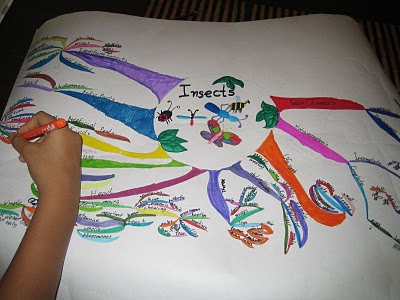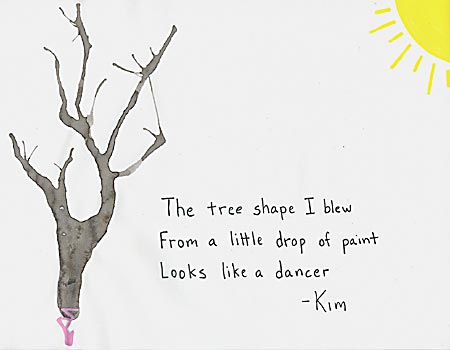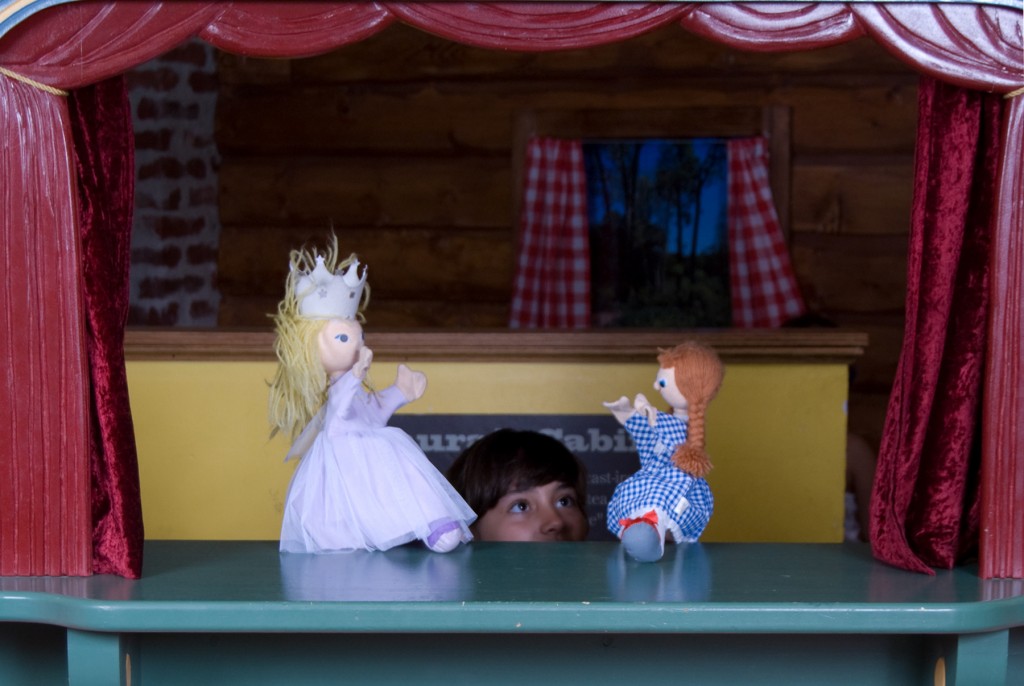
by PRIDE Reading Program Admin | Sep 2, 2016 | Articles & Resources
We are so proud to have been nominated for the Red Tricycle’s 2016 Totally Awesome Awards, under the category of Los Angeles Area’s Bright Classes for Kids with Special Needs.
Do you LOVE PRIDE and want us to win? Vote for us TODAY by visiting the Red Tricycle voting website by clicking here to go to the voting page. You will scroll down to Local Regions and
- select a region: Los Angeles
- select a category: Activities and Classes
- select the class: Bright classes for kids with special needs
From September 1 – September 30, 2016, parents across the nation will vote for the Finalists in each category. The winners of each category will be named Red Tricycle’s Totally Awesome Award 2016 Winner! Winners will be announced on October 10, 2016.
Every vote makes a difference and supports PRIDE’s future. We need your votes to win so please help us get the word out and VOTE for us!
We almost forgot to tell you about PRIDE’s exciting bonus prize! Everyone who votes for us in Red Tricycle’s Totally Awesome Awards will be entered to win an awesome prize of a $75 gift card to Target. Let us know after you vote so we can:
- Thank you personally
- Enter your name in our $75 Gift Card to Target Raffle Prize
Thank you for voting for us!
<a target="_blank" href="https://redtri.com/2016-totally-awesome-awards/">
<img src="https://redtricom.files.wordpress.com/2011/09/finalist-v2.png?w=300&h=250&crop=1" alt="Finalist" />
</a>
|

by PRIDE Reading Program Admin | Aug 30, 2016 | A PRIDE Post, Dyslexia
A parent is asking “Why don’t they test dyslexia in all children?”
My answer is that morally speaking, they should, but legally speaking, all schools are supposed to test children for learning disabilities such as dyslexia when there is a reason to do so. The reason to test dyslexia in a child can be as innocuous as a suspicion on the part of a professional teacher or staff member that something (perhaps) unknown prevents a particular student from learning.
Schools are supposed to act as required by law. There is no absolute requirement to test dyslexia in all children, so schools do not currently assess all students for dyslexia unless there is a particular reason to do so. When a parent, teacher or staff member believes that an assessment may be needed in an area of suspected disability, that belief provides a particular reason to ‘test’ or ‘assess’ whether a learning disability such as dyslexia is present. There are many reasons to believe that a particular child should be assessed for a learning disability.
Imagine being a teacher. You are staring into the faces of 20 eager students seated at their desks and looking at you expectantly. Each one is different. Each one looks different. Each one has a different name. Each one has a different background. Not one of them approach learning in the same way. Some of them have disabilities that impact learning, and all of them have the ability to learn if provided special education services and accommodations.
In my experience in a typical K-12 class, there will be an average of at least five kids in twenty who do not seem to focus on the lessons written on the board or textbooks, who write letters backwards, who seem unable to keep handwritten text organized and spaced properly on a page, who squirm, daydream, speak out of turn, fail to follow directions, become defiant, hate school, and/or distract the class from the lesson plan. Any of these characteristics can be indications that something is preventing each of these students from learning. Students demonstrating any of these behaviors could be candidates for testing dyslexia and assessment if there is a suspicion that a disability may be causing the behaviors interfering with learning.
A disability does not have to actually exist to trigger the law’s duty to ‘Child Find.’ It is enough if there is an area of suspected disability.
Although it is the school’s responsibility to implement ‘Child Find’ policies to identify and then remediate learning disabilities, savvy parents with advocacy experience will always want to assure in advance that everybody does the right thing, and follow-up afterwards. Here’s how we do it: put in writing all reasons for the concerns that a disability may exist. Explain that whatever the cause may be, it is impeding your child’s learning. Cite examples, and ask for a psycho-educational evaluation at the school’s expense to determine whether a learning disability is interfering with your child’s access to the educational curriculum. This will trigger a timeline, and the school will have a certain amount of time to respond. Deadlines do tend to motivate action, but a parent who is pro-active will not wait for the school to schedule an assessment; for many reasons it is advisable to take a child to a private psychologist who specializes in psycho-educational evaluations.
Some parents feel that psychologists employed by a school district have a first loyalty to the school district/employer and not to the child being tested. These parents feel there is a built-in bias or conflict of interest when the testing staff are employees of an entity which may have adverse interests to their child. There are nonprofit organizations and some private psychologists providing sliding fee scales depending on a family’s ability to pay for the private evaluation(s), which can become costly. Finally, the testing psychologist writes a report, or assessment, about a student – these should be written only after careful study, testing, observation, interviews with teachers, staff, parents, friends (if applicable) and review of student’s work product. No single method of evaluation is sufficient to determine whether a learning disability exists.
A parent can call for an individual education plan (IEP) meeting at any time by writing and delivering a letter to the appropriate school staff. Schools may fail in their ‘child find’ efforts, but no parent should! Any parent who believes something is interfering with her child’s ability to read, write, spell, and do math ought to have her child evaluated to see whether a learning disability exists, and find out what can be provided in the way of educational services and accommodations to allow this child to receive an appropriate education.
So, if you think your child has dyslexia, be a squeaky wheel and get a dyslexia test for your child. Nobody will do your child’s educational advocacy for you. For more information, ask someone with experience to teach you to advocate for your child’s educational needs. Be sure to bring every educational document in your possession, including IEP documents, testing from the past, teacher letters, etc.
It is with adult vigilance, follow-through and careful observation that all students who need it will be ‘found’ through ‘Child Find.’ That is, they are identified, assessed, and provided with the educational services and accommodations needed to learn effectively.
Learn more about the New PRIDE Reading Program
_________________________________________________________________________________________________
Nan Waldman, Esq. is a special education and disabilities consultant in Los Angeles with 20 years of experience in the field. She is also a parent and primary caregiver of a child with disabilities, a teacher, an advocate and a lawyer. Nan Waldman, Esq. can be reached by email at n.waldman.esq@gmail.com

by PRIDE Reading Program Admin | Jul 21, 2016 | Articles & Resources, News & Events
Is it Back to School already? New teacher, new friends, new material, and a new classroom! While many of us are excited about the new school year, others are anxious and nervous and even dread the return back to class. If a student is well prepared, their classroom performance and grades will reflect that strong confidence.
Many kids have not practiced reading or writing over the summer and may have forgotten a lot of important reading comprehension and writing skills. At PRIDE Learning Center, our goal is to get these kids prepared before they return to the classroom and then support them throughout the school year. Feeling confident is extremely important for a child when entering their new grade level.
Tutoring at PRIDE Learning Center is a wonderful option for kids who feel that they may fall behind early on in the school year as well as for those looking to get ahead in reading and writing and comprehension skills.
The beginning of the new school year is the perfect time to change learning for your child! At PRIDE Learning Center we want to help you save BIG, too! Enroll your child between August 1 – September 16th and receive a $100 off coupon!
Offer is for new clients only and coupon must be presented at time of registration. Cannot be combined with any other offers. Limit one coupon per household.
BACK TO SCHOOL SAVINGS:
- $100 off Coupon
- One-on-one instruction
- Two hours minimum per week
- Register between August 1-September 16th
- Valid In-Center/In-Home/On-Site/On-Line
Call PRIDE Learning Center TODAY and start your child on the path to success:
Toll Free: 866-774-3342

by PRIDE Reading Program Admin | Jul 20, 2016 | A PRIDE Post, Speech Therapy
I am often asked how long do I think a child will need speech therapy for, and tend to have difficulty with answering this question. The reason for this is that there are a multitude of factors that need to be considered when determining the length of speech therapy, or any therapy for that matter – including occupational therapy, physical therapy, behavioral therapy, educational therapy, etc.
The following list are some factors that I feel are important in determining the length of therapy, and should be kept in mind when thinking about how long your child may need therapy for. While I have tailored it towards speech therapy, it is applicable to other disciplines as well.
1. The Reason for the Speech Delay
For example, a simple articulation disorder can be corrected much quicker than if a child’s speech delay/disorder is due to childhood apraxia of speech, oral motor challenges or an orofacial myofunctional problem which can take longer to resolve.
2. There are Other Disorders That are Present (Comorbidity)
Seeing if other disorders are present such as, childhood Apraxia of Speech (CAS) and Autism, an Auditory Processing Disorder (APD) along with a receptive language delay. Does the child have Down Syndrome or Cerebral Palsy?
3. The Severity of the Speech Disorder and/or Delay
For example, if it is a simple articulation disorder, is there only one sound that is being affected or multiple sounds? If it is a language delay, does it affect just receptive language, or just expressive language or both receptive and expressive language?
4. Are There Structural Factors Present That Need to be Considered?
Such as a High Narrow Palate, Ankloglossia (Tongue Tie) Etc..?
5. Readiness of Your Child
Is your child ready to participate in therapy sessions as well as his/her motivation to practice out of therapy sessions as well.
6. Commitment to Therapy Sessions
Consistent and regular participation is key to moving forward. This is because your therapist can provide you with valuable information, such as what strategies worked well in sessions to help you elicit target responses at home, “homework” to practice when you are not in sessions etc..
7. Parental/Family Involvement
This means both in the therapy sessions, and at home to help with carry over. I often use the analogy of learning how to play the piano to explain the importance of parental/familiar involvement. If a child were to take piano lessons once or twice a week, s/he would learn how to play the piano, however s/he would most likely not become a great pianist. To be a great piano player, s/he would have to practice daily. The same thing is true of speech. The more often one can practice, the faster and easier “fixing the problem” will be. I also believe in the quality of practice and not necessarily quantity. For example, practicing a good 5-10 minutes daily, in my opinion is much more valuable than cramming in a 50-60 minute homework session once a week.
8. When the Therapy Began
Research has shown the effectiveness of early intervention. Ultimately should you suspect that your child may have a speech delay or disorder, the better it is to start as soon as possible. Unfortunately while some children may “grow out of it”, others are not as lucky and waiting to see if the problem will fix itself (e.g. speech error, tongue thrust) may in turn cause a bigger problem as the incorrect speech pattern or habit will be harder to break.
9. Communication Between Your Child’s Service Providers
I often work with occupational therapist, behaviorists, educational therapists etc… to see how I can ensure their goal(s) for our client may be able to be met in my therapy sessions (e.g., using a token board to keep on task behavior, providing a sensory break when a child becomes fidgety etc…), and vice versa, as this assists with generalization/carry over. Additionally communication between doctors, dentist, orthodontists etc… is equally as important to make sure that the speech goals that are to be addressed in therapy sessions are attainable. For example, if a child has a short lingual frenulum (tongue tie) s/he will not be able to produce certain sounds that involve lifting the tongue (such as /l/) until s/he has surgery. Or, if there is a narrow palate resulting in the child’s tongue coming forward and out, if s/he has not received a palatal expander to help widen her palate, then working on correcting tongue placement will not be effective until the palate has been widened to allow room for the tongue.
Learn more about the New PRIDE Reading Program
Stefanie Trenholme is a pediatric speech language pathologist and the owner of Trenholme Pediatric Speech Therapy, LLC in West Los Angeles. Over the past 11 years she has been providing speech therapy in the Los Angeles area. As a result, she has been committed to developing strong working relationships with various professionals including pediatricians, psychologists, psychiatrists, behavioral agencies, educational therapists, occupational therapists, orthodontists, special education lawyers as well as speech pathology colleagues within the community.
Stefanie can be reached by phone at (310) 923- 6323 or email at trenholme123@aol.com
Thank you for reading my blog today!
Karina Richland, M.A., is the author of the PRIDE Reading Program, a multisensory Orton-Gillingham reading, writing and comprehension curriculum that is available worldwide for parents, tutors, teachers and homeschoolers of struggling readers. Karina has an extensive background in working with students of all ages and various learning modalities. She has spent many years researching learning differences and differentiated teaching practices. You can reach her @ info@pridereadingprogram.com or visit the website at www.pridereadingprogram.com

by PRIDE Reading Program Admin | Jun 23, 2016 | A PRIDE Post, Writing Skills
The best way to help your child become a better writer is to separate the mechanics of writing (grammar, punctuation, handwriting, spelling) from the creative part. Your child’s strength is in his vivid imagination – an important asset in all writers. Help your child learn that writing is a two-stage process: the first stage is getting the ideas on paper; the second step is correcting or editing the work.
When writing the first draft of an essay or story, encourage your child to write things down in whatever form or order he is comfortable with. Once those ideas are in a written form, you can guide your child to developing a more polished version. If your child is very young, you will have to give a lot of help, but as he grows older, he will learn to do more for himself. Keep in mind that even professional writers hire editors to proofread and correct their work!
MIND MAPPING
A good technique for getting ideas to flow on the paper is to use mind-mapping. Your child will start with a main idea and then write down a few words or will draw a picture representing the idea in the middle of a blank sheet of paper. He will then draw lines that go out from the center for each main idea he has about the subject. At each line he should write a few words or draw a picture. He can also add details to each idea by writing even more words and connecting them with a line to the idea they relate to.

Once the ideas are written down in this mind mapping format, you can help your child develop them into written sentences, using the child’s map as a guide for developing the structure of his paragraph or essay.
POETRY
Introduce your child to poetry or verse. Try using free verse-poetry that does not have to have a particular rhythm or cadence, and does not have to rhyme. One of the advantages of writing poetry is that it frees the child from writing conventions, such as the need to use complete sentences. It also allows your child to experiment with the sounds of words and to use new words that are evocative of a particular mood or feeling.
Your child might enjoy writing haiku, mostly because it is short. Haiku traditionally has three lines consisting of seventeen syllables in total, usually arranged in lines of five, seven, and five syllables. Although the form is very brief, writing haiku will help your child develop sensitivity to the phonetic structure of word segments.

Another fun form of poetry is to make a slideshow poem. You can have your child take 5 or 6 photographs based on a theme (a recent trip, a family member’s life). Import the pictures into a software program such as PowerPoint or iPhoto and have the child write a poem based on the pictures by posting a word or two with each photo image. Make it really fun by adding special effects, transitions, or music to spice up the slideshow poem.

Teach your child how to write an acrostic poem. This is where the first letter of each line spells out his name when read from top to bottom. Once the child writes a poem based on his name, then he can write about family members, pets and friends.

PLAYS
You might also encourage your child to write a play, it is sometimes easier for the reluctant writer to focus only on the dialogue among the characters. Your child might enjoy presenting his play as a puppet show or using a video camera to make his own movie using his own written screenplay.

Writing, like reading is one of those tasks that will only improve through a lot of practice. Set up a designated writing area somewhere in your home and have writing material available to your child at all times. This includes markers, pencils, pens, and crayons, as well as coloring books, paper, and journals. Provide lots of writing opportunities for your child and above all – keep it fun!
_______________________________________________________________________________________
Karina Richland, M.A. is the Founder and Director of PRIDE Learning Centers, located in Los Angeles and Orange County. Ms. Richland is a certified reading and learning disability specialist. Ms. Richland speaks frequently to parents, teachers, and professionals on learning differences, and writes for several journals and publications. You can reach her by email at karina@pridelearningcenter.com or visit the Pride Learning Center website at: www.pridelearningcenter.com











